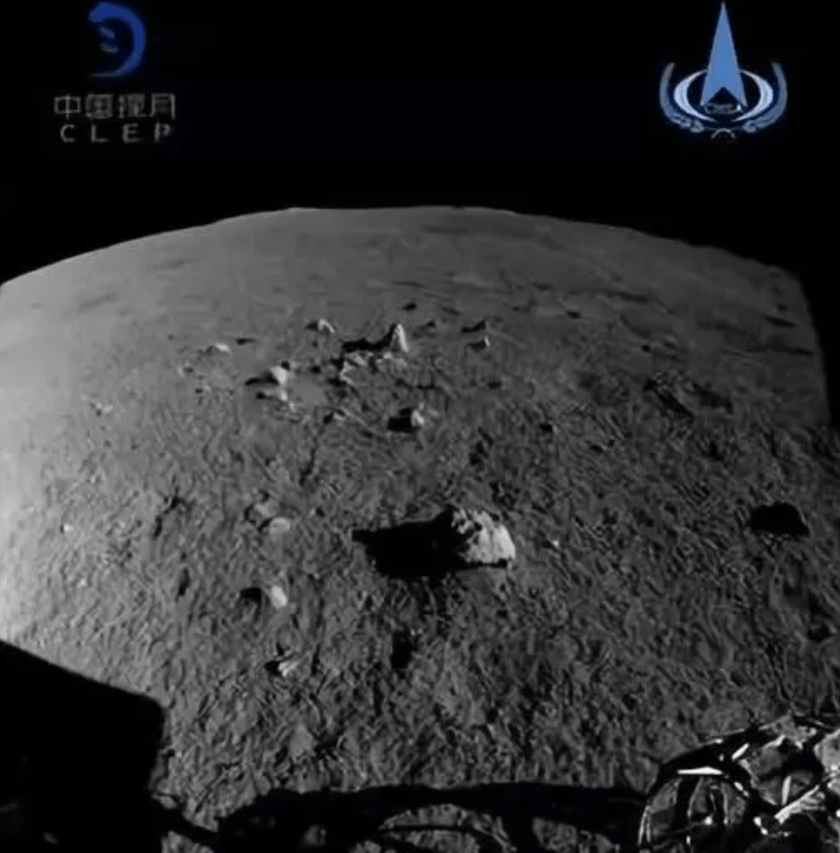The China National Space Administration (CNSA) has released some new photos and updated the world on their lunar rover mission. The Yutu-2 rover is working its way into the history books on the lunar far side, exploring the Von Karman crater. It’s third lunar day is now in the record books.
As of March 4th, the Yutu-2 rover has travelled a total of 127 meters. In its first two lunar days, the rover travelled a total of 120 meters, so this third day of travel was only 7 meters. But the rover spent time taking images of rocks and of the lunar surface, which lowered its travel time.
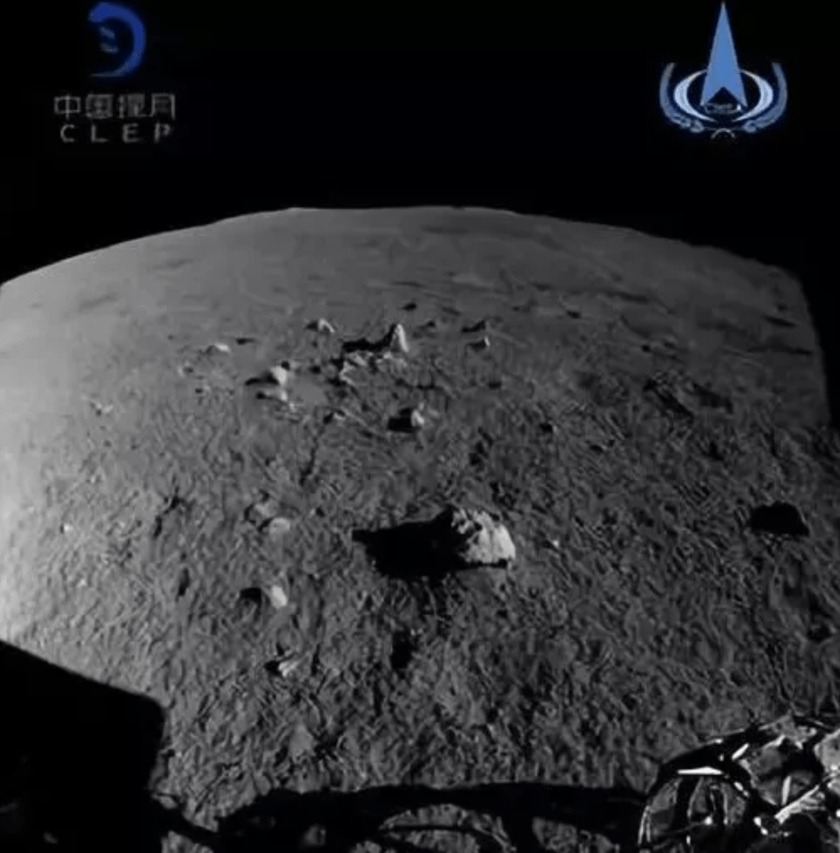
The CNSA doesn’t seem that attuned to the whole “sharing your mission with the world” idea that guides other agencies like NASA and the ESA, for instance. But it’s still nice to see images and other updates on the mission. This close-up picture of a rock with a red circle means something, but it’s not clear what the image is highlighting.
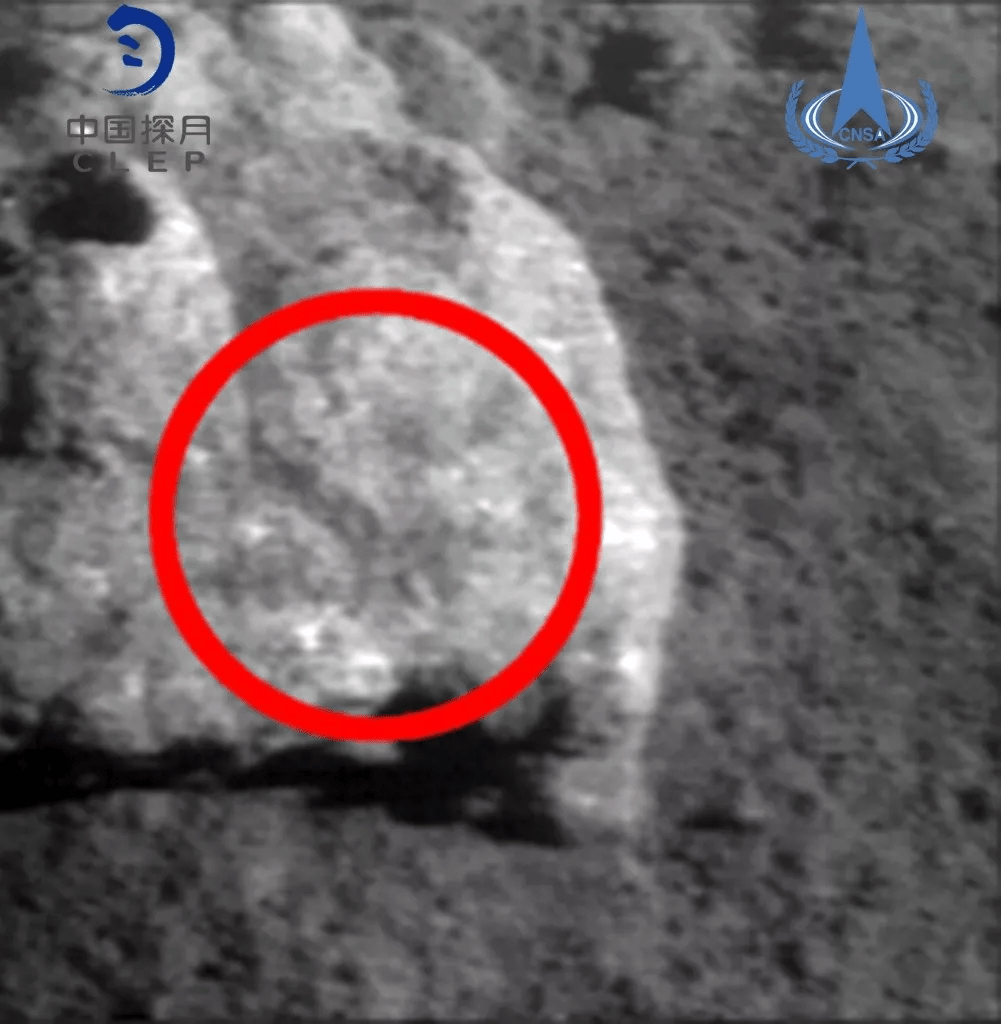
The rover carries several instruments in its scientific payload, including the
Visible and Near-Infrared Imaging Spectrometer (VNIS). The VNIS can identify the type of rock in the image and can also identify trace gases.
It can be difficult to find out what exactly is going on with China’s mission to the far side of the Moon. China is an autocratic state with no free press. There are some fairly terse press reports that suggest everything is going well, but details are hard to find.
The CNSA doesn’t issue press releases in English, or none that Universe Today could find. But they did release some info, and the Google Translator version of it appears below.
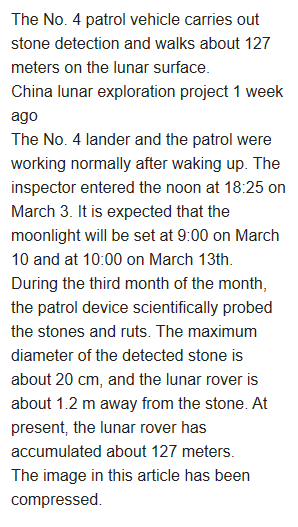
Luckily, the hard-working people at the Planetary Society are following the Chinese mission to the Moon, and Phil Stooke has created this map of the rover’s path on the Moon.
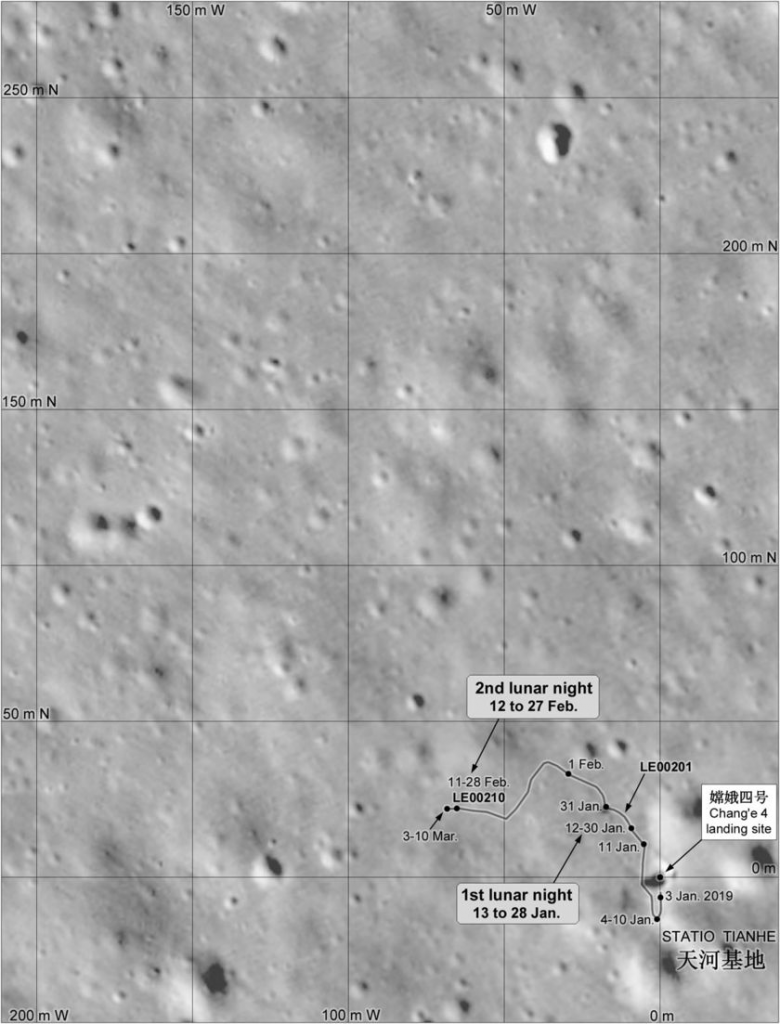
One of the benefits of being the first to explore the far side of the Moon is naming rights. As the first nation to explore the area, they get to propose names for places and features to the International Astronomical Union.
So far, the IAU has approved the name “Statio Tianhe” for Chang’e 4’s landing site. Tianhe means “Heavenly River”, an ancient Chinese name for the Milky Way from a Chinese folktale “The Cowherd and the Weaver Girl.”
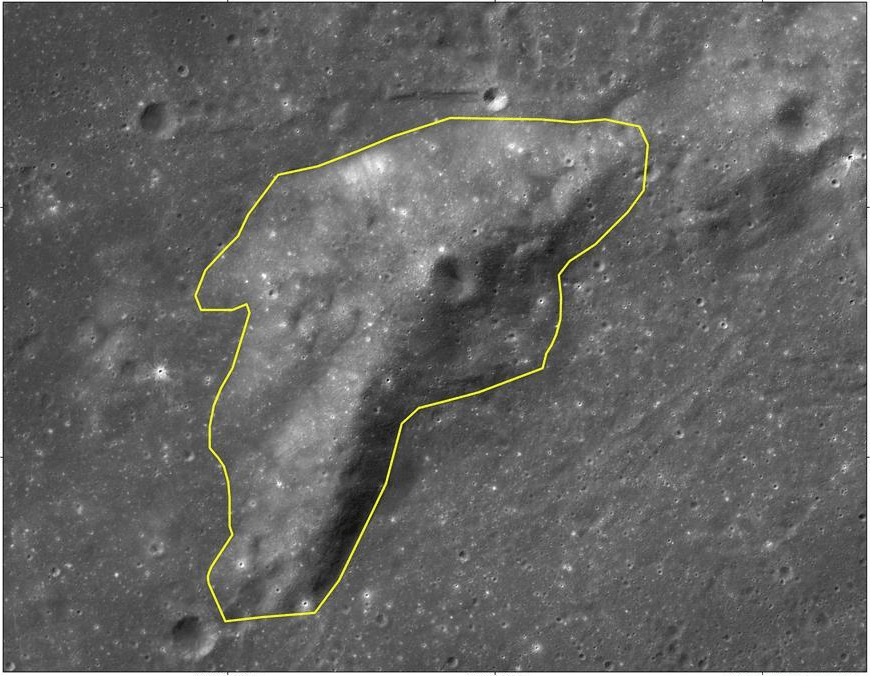
Three craters near Statio Tianhe also got names, all from the same folktale: Zhinu, Hegu, and Tianjin. The IAU also approved the name Mons Tai for the central peak of the Von Karman crater.
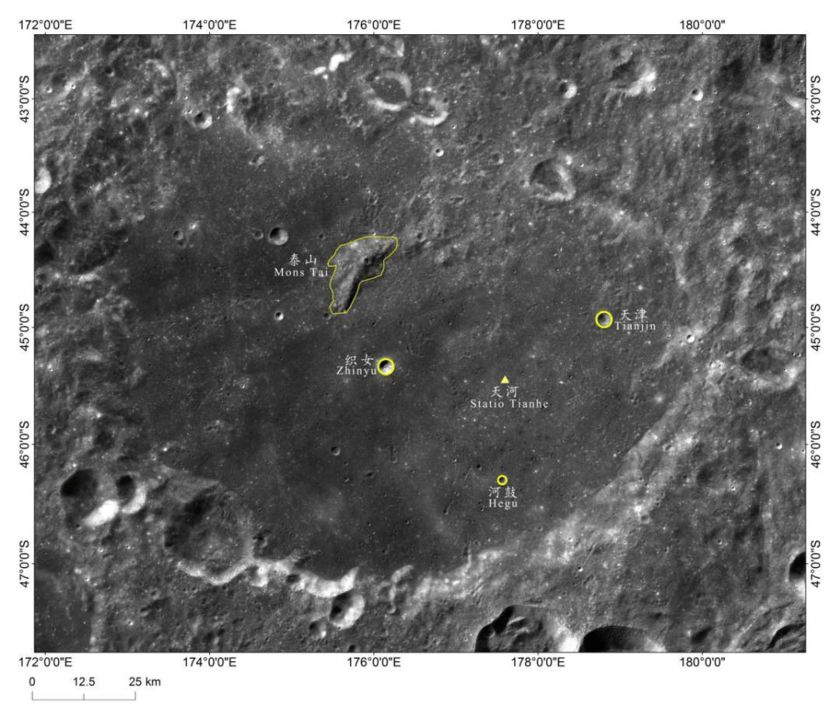
The rover’s name, Yutu-2, means Jade Rabbit. It’s part of the Chang’e-4 mission to the far side of the Moon. The Chang’e-4 lander arrived on the lunar surface on January 3rd, 2019. The rover disembarked about 12 hours after landing.
It’s too early to get any science results from the mission, but it looks like things are going well. Some authoritarian regimes can tend to hide or downplay their own failures, like when Russia tried to blame the failure of their Phobos-Grunt mission on sabotage. So even if things do go awry somehow, I’m not sure China would be very clear about it.
But whatever China’s politics of the day are, their mission to the Lunar far side is historical, and it’s emblematic of China’s growing space exploration abilities.
Sources:
- The Planetary Society: Yutu-2 Rocks On into Lunar Day 3 for Chang’e-4 mission
- CNSA Press Release
- Xinhua News Agency: Chang’e-4 landing site named “Statio Tianhe”

